Buying an Apple Mac isn’t as simple as it once was, with plenty of laptops and desktops available at a range of prices that make it difficult to work out which is best for your needs – but that’s where we at Trusted Reviews come in.
Apple offers a huge number of computers, some designed for on-the-go work and others best suited to living on a desktop. This can make choosing the right one tricky if you don’t know exactly what you’re looking for. Fortunately, we have thoroughly reviewed and tested all the major contenders, including the MacBook Pro powered by the M2 Pro and the most recent Mac Studio with an M2 Ultra.
But what should you consider when on the market for a Mac? For us, it boils down to several factors including build quality, real-world and synthetic benchmark testing and, in the case of laptops, battery life. Below, you’ll find the very best Macs available right now that tick all those boxes.
To provide accurate and comparable results, our team of experts extensively use each Mac as their primary device for at least a week – though often a lot longer.
What’s more, we’ve curated a diverse selection of Macs, ranging from the lightweight MacBook Air to the screen-toting iMac and the dinky Mac Mini. Whatever your requirements may be, you can rest assured that you’ll find a Mac that suits your needs.
If you can’t find a Mac you like at the moment, we’d recommend bookmarking this list as we’ll be updating it frequently as more of them pass through the Trusted Labs. It’s also worth checking out our Best Laptop, Best Ultrabook, Best Student Laptop and Best Budget Laptop pages for a more general look if you haven’t got your heart entirely set on going for macOS.
Best Mac at a glance
How we test
Every Mac we review goes through a series of uniform checks designed to gauge key things including build quality, performance, screen quality and battery life.
These include formal synthetic benchmarks and scripted tests, plus a series of real world checks, such as how well it runs the most frequently used apps.
We also make sure to use every Mac we review as our primary device for at least a week to ensure our review is as accurate as possible.
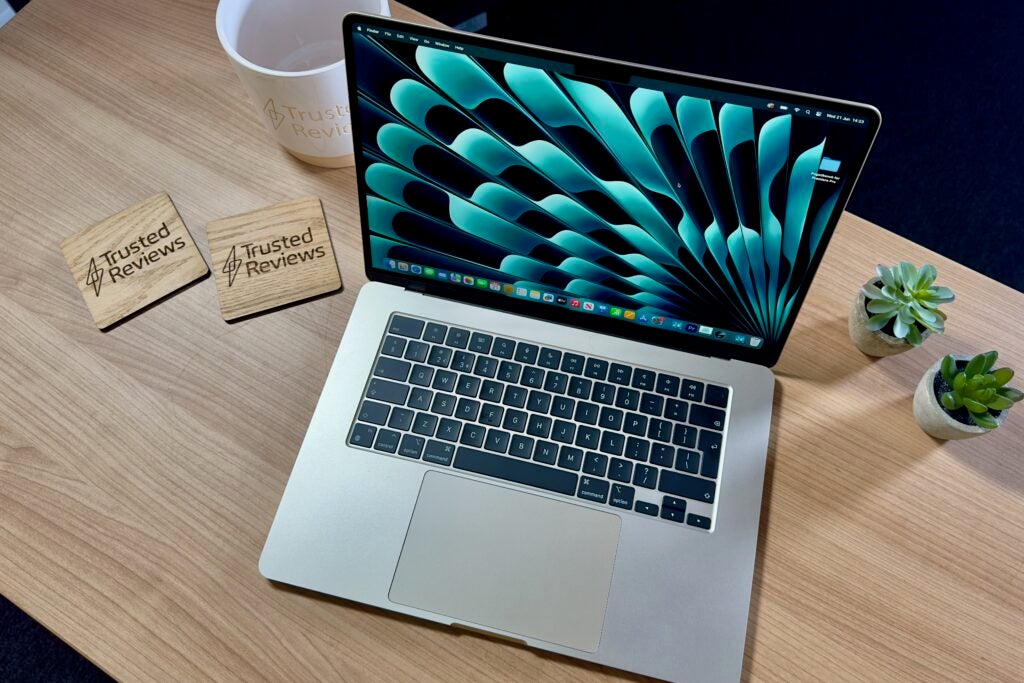
Apple MacBook Air 15-inch
Best overall Mac
Pros
- Thin and light with a huge screen
- The M2 remains a powerful chip for everyday tasks
- Not a huge price increase over the 13-inch model
Cons
- Annoying port placement
- Internal upgrades are expensive
- M2 not a massive jump over M1
The Apple MacBook Air 15-inch did something remarkable, improve on the already excellent M2-powered MacBook Air by bringing a larger size. If you want a dose of everything, this laptop is a stunning all-rounder and our pick for the best overall Mac for most people.
The 13.6-inch original MacBook Air M2 is be no means tiny but, if you want plenty of room for multiple windows and luxurious multimedia viewing, it makes sense that some would prefer a larger display. Apple provided that with this 15-inch model, and its 15.3-inch 2.8K Liquid Retina display. It may not be an OLED panel, so you don’t get those inky blacks, but there’s plenty of detail and it gets extremely bright. Excellent audio also makes this an ideal machine for listening to music or watching movies too.
There’s no change in performance between this laptop and the smaller model but there isn’t much need for improvement. What you get is a MacBook that is whisper-quiet, as no fan is needed, but is able to dominate productivity workloads and can even manage 4K video editing.
Despite its newly larger size, it remains far from a burden on your back when you lug this 15-inch Air around. It comes in at 1.51kg, still lighter than the 14-inch MacBook Pro, and is just 11.5mm thick. Being relatively thin and light doesn’t mean battery life has been shirked on though, with up to 14 hours being achieved in our testing. That’s a remarkably result.
Reviewer: Max Parker
Full review: Apple MacBook Air 15-inch review
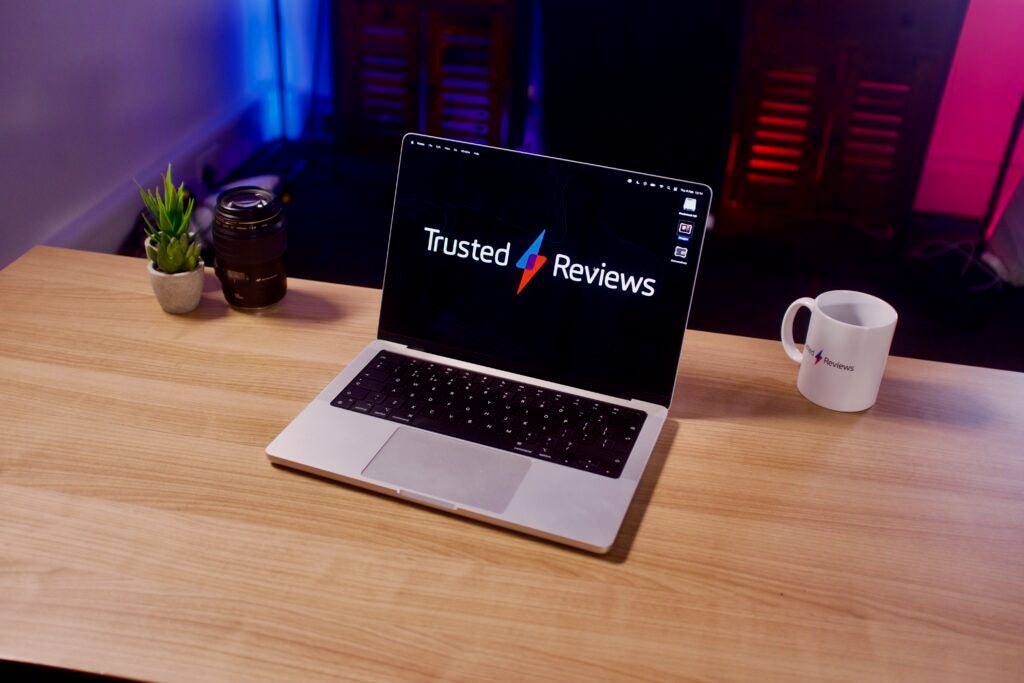
Apple MacBook Pro 14-inch (2023)
Best Mac for portable content creation
Pros
- Huge amount of internal options
- Stunning screen
- Stays quiet and cool
Cons
- Even more expensive than before (for those in the UK)
- Lack of Face ID makes the notch feel dated already
- Pricey to upgrade the memory
The Apple MacBook Pro (2023) is a powerhouse laptop. It comes with either an M2 Pro or M2 Max chip, up to 96GB memory and in two screen sizes. We’ve been using the 14-inch model for this review, but there’s a larger 16-inch model if you’re after a bigger canvas.
While this upgrade isn’t a huge jump over the models with an M1 Pro or M1 Max chip, it does offer small performance gains for both the GPU and CPU and extra features, like a more capable HDMI port for 8K output and faster WiFi 6E.
This remains a very speedy laptop that offers impressive internal options to meet your needs. It also has an incredibly vibrant Mini LED panel, with a measured peak brightness of 1600 nits, as well as an immense HDR performance, making it ideal for creating content.
The MacBook Pro (2023) retains the boxier frame with the same industrial look as the previous version and keeps a good selection of ports: HDMI out, an SD card reader, and MagSafe for power delivery. The keyboard is responsive, with a good level of travel and well-sized keys making typing a joy.
We also found the battery life of the 2023 MacBook Pro 14-inch to be impressive, though the larger 16-inch model will be the king here if battery life is key.
Reviewer: Max Parker
Full review: Apple MacBook Pro 2021 review
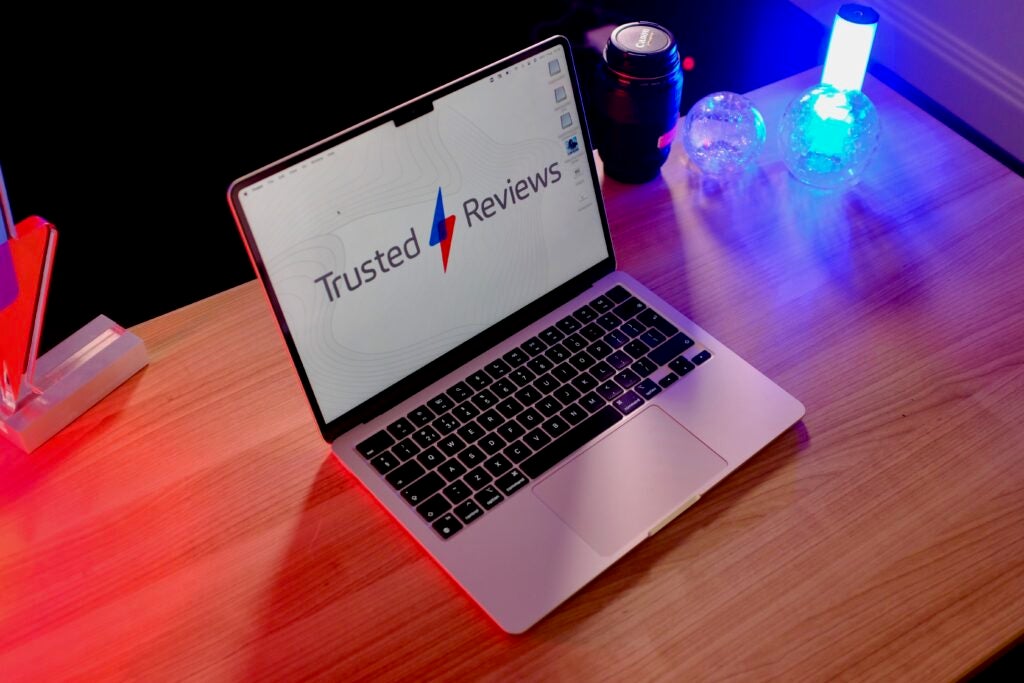
Apple MacBook Air M2 (2022)
Best Mac for students
Pros
- Fantastic performance
- Sleek, updated design
- Excellent keyboard and trackpad
- Long battery life
Cons
- Expensive starting price and upgrades
- More colours would have been nice
- The M1 version remains an excellent buy for less
The newest Mac on our list, the Apple MacBook Air M2 (2022) is one of the best mid-range Mac out there we’ve tested.
Inside, this 2022 Air features Apple’s all-new M2 chip which can be thought of as more of a refinement to the preceding M1, as opposed to a re-engineering. Performance is incrementally better than the M1 chip, and therefore the M2 is more than powerful enough to handle intense tasks such as 4K video editing with ease. We found that 8GB of RAM on the standard model was more than enough, although you can upgrade to 16GB for some extra headroom, which will cost you an extra £200/$200. This is also a fanless MacBook, which means it’s silent all the time, but may fall down during sustained loads due to the lack of active cooling.
In terms of its display, the MacBookAir M2 has a larger display with thinner bezels – the total screen size sits at 13.6 inches, which is the largest available on a MacBook Air today. While it isn’t Mini LED like on the Pro, the IPS LCD is still more than capable for day-to-day working.
The MacBook Air M2 has a boxy design that’s in keeping with the current MacBook Pros and a frame that’s thinner than the previous MacBook Air. To be precise, this new 2022 iteration is 1.13cm thick, which actually makes it thinner than an iPad with a Magic Keyboard attached, and a weight of 1.24kg also makes it immensely portable. There’s also the addition of MagSafe to the party for charging, although you don’t get an SD card reader and HDMI out, as you do on the MacBook Pro.
It must be said, the battery life with this M2-powered MacBook Air is great, with our testing showing it to last for 14 hours during a video loop test, which offers a 2 hour boost compared to the previous model. In addition, for a working day in the real world, we found it to last comfortably with 20% juice still left in the tank
Reviewer: Max Parker
Full review: Apple MacBook Air M2 (2022)
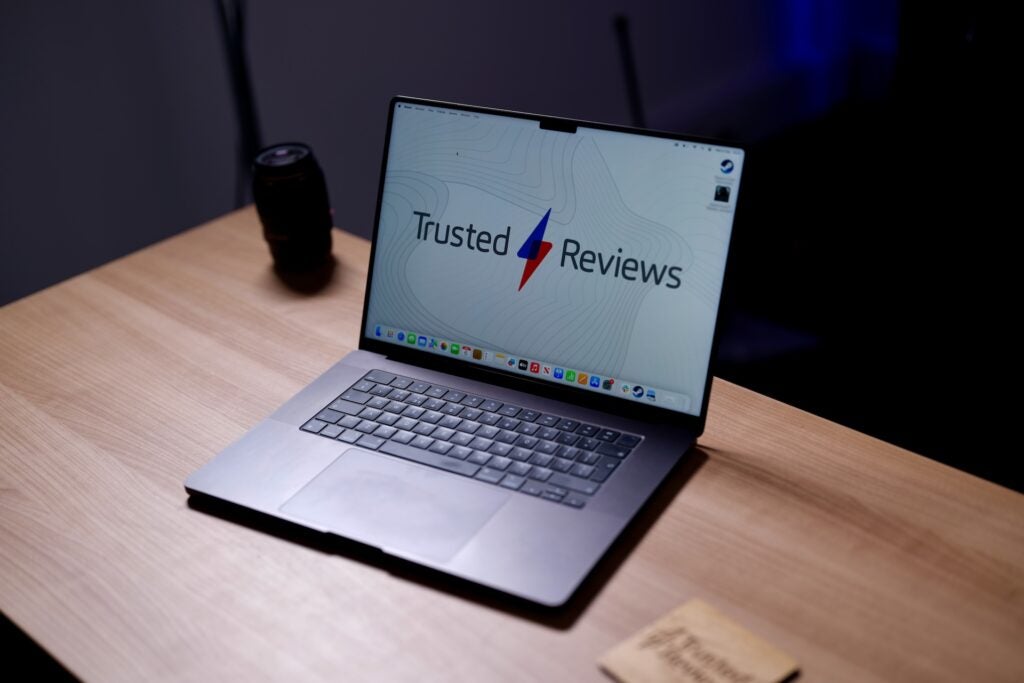
Apple MacBook Pro 16-inch M3 Max
Best Mac for portable production work
Pros
- Exceptional performance
- Stunning display and keyboard
Cons
- The price builds up very quickly
- No Face ID
The Apple MacBook Pro 16-inch M3 Max is a machine that most people simply don’t need. But, for power-hungry production work, it might be the perfect option for serious professionals.
The new 16-inch Pro isn’t a huge leap forward from its predecessor but incremental improvements still mean it’s a stunningly powerful machine, and it still has the remarkable trick of offering high-end performance on and off power.
This machine comfortably beat out all other laptops in our benchmarking, only being beaten by Apple’s own Mac Studio desktop amongst products we’ve tested. So, what’s all that power for? The raw performance of this machine is more than, even, many serious creators will need. This is a device made for those doing extremely demanding production work, whether that’s detailed creation of 3D models and environments to complex film production.
Along with the performance results this machine can achieve, it comes with a wondrous display to show it all off on, an impressive battery life for such a powerful device as well as an top-notch keyboard and trackpad. There’s a plethroa of ports to help out professionals on the go too.
Reviewer: Max Parker
Full review: Apple MacBook Pro 16-inch M3 Max review
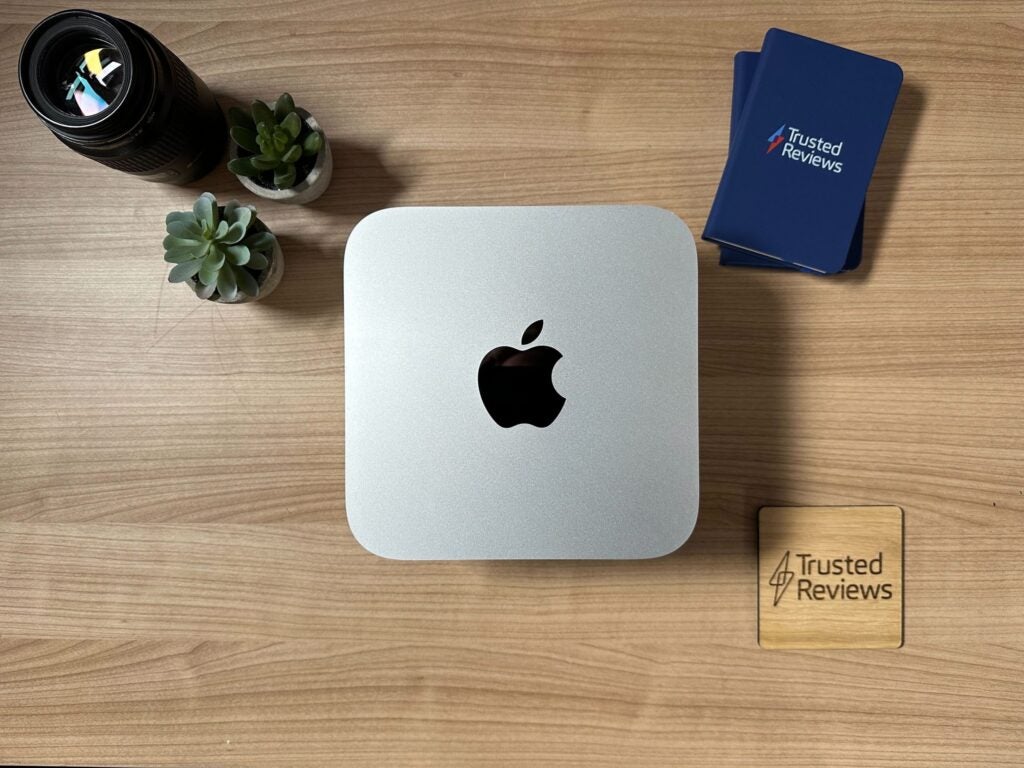
Apple Mac Studio (2023)
Best desktop Mac
Pros
- Very good performance
- Smart port selecion and positioning
- Quiet
- Small size makes it easy to place into exisiting setup
Cons
- Very expensive to upgrade
- Parts not easily upgradable
The current Mac Studio (released in 2023) is the best high-end machine Apple sells. Available with either an M2 Max or M2 Ultra chipset, this is a very capable desktop.
Specs-wise, the Mac Studio can be kitted out with up to a 24-core CPU, 76-core GPU, 192GB of memory and 8TB of storage. There’s an excellent selection of ports too, including a handy SD card slot on the front and multiple USB-A and Thunderbolt 4 ports on the rear.
During our testing, we found the Mac Studio a fantastic performer in both synthetic tests and actual use. It also stayed incredibly quiet and cool, even while performing intensive tasks. This is very much a spec bump over the previous M1-equipped model, with a slightly higher performance ceiling and a couple of extras that we’ve seen in other Macs from around the same time, including Bluetooth 5.3 and Wi-Fi 6E.
Like the Mac Mini, the Studio comes with no accessories. You’ll need to provide a monitor, keyboard and mouse.
Reviewer: Max Parker
Full review: Apple Mac Studio
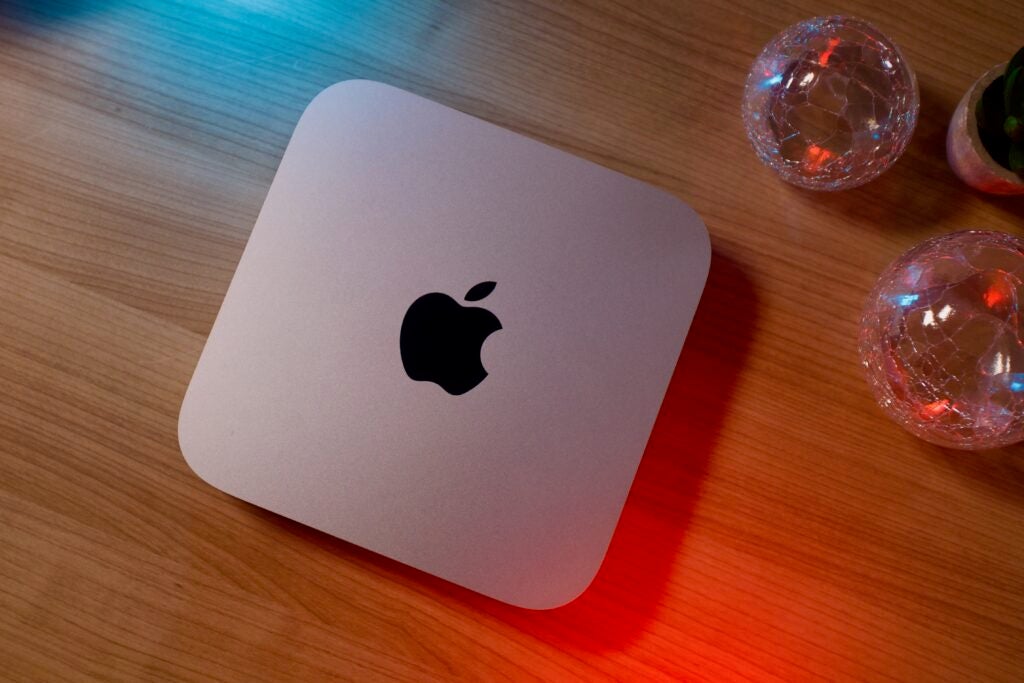
Apple Mac Mini (2023)
Best affordable Mac
Pros
- Easily fits into existing setups
- Powerful, and with plenty of options to make it more powerful
- Very quiet
Cons
- No SD card slot
- Higher-end M2 Pro models get close to Mac Studio’s price
The smallest desktop Mac offered by Apple, the Mac Mini (2023) is a wonderful machine that’s a top choice whether you’re simply after an upgrade to an old machine or want to get some creative work started.
There are two chipset options, a more modest M2 entry version (that’s the same chipset you’ll find in the MacBook Air) and a much more powerful M2 Pro version.
Our tester reviewed the M2 Pro model, finding it more than quick enough for even Pro-level creative tasks you might not expect a dinky machine of this size to accomplish. We’d recommend the regular M2 version if your tasks won’t include things like video editing as there’s still enough grunt here.
You can bump up the memory and storage to high levels, though this needs to be done when purchasing as you can’t tweak the internals yourself.
The machine itself is small, light and can be easily placed into an existing setup. There’s a good selection of ports on the back, though it would have been nice to see a few on the front (like the Mac Studio). You will need to provide your own keyboard, mouse and monitor.
Reviewer: Max Parker
Full review: Mac Mini 2023
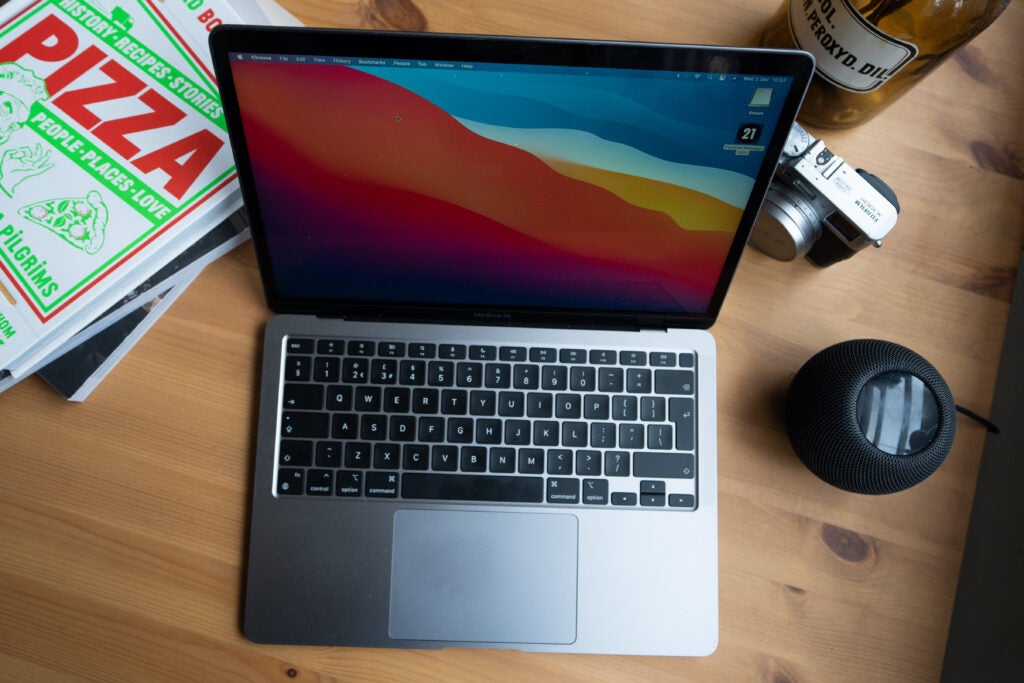
MacBook Air (M1)
Best value Mac
Pros
- It’s so fast thanks to M1
- Exceptional battery life
- Strong app support
- Great keyboard
Cons
- Poor webcam
- Same design as before
- Poorly positioned (and only two) USB ports
If it’s a great value Mac you’re after, look no further than the MacBook Air M1.
The headline feature here is the M1 chip that we found to outperform the competition at this price during testing, with it breezing through basic productivity tasks, as well as rendering 4K HDR video content with multiple apps running in the background. Even as the most ‘value’ Mac on our list, it still packs quite the punch.
This specific MacBook Air is a fanless machine, meaning it should also be extra quiet, and we found that even under load the laptop didn’t make any noise, which is a testament to how good the thermal performance of these M1 chips is. As well as being quiet, we also found the M1 MacBook Air to be a sleek machine, although its slender frame does mean there isn’t much room in the way of ports – you only get a pair of USB-C options, as well as a headphone jack.
Compared to its predecessor, the display has been updated to now support the DCI-P3 colour gamut, which we found to offer a more colourful image, as well as one that also remains sharp and bright enough for day-to-day and more creative applications, especially thanks to its sharp 2560×1600 resolution.
During testing, the battery life also proved to be great, with a total of 11 hours of go-juice before you’ll need to charge the MacBook Air up again.
Reviewer: Max Parker
Full review: MacBook Air (M1)

iMac (2021, 24-inch)
Best Mac all-in-one
Pros
- Fantastic design
- Excellent webcam, speakers and microphones
- Bright and sharp screen
Cons
- No SD card slot
- Can’t adjust the height
Keeping in the theme of more ‘value’ type Macs, if it’s a desktop one you’re after, the iMac (2021, 24 inch) should serve you rather well indeed.
It’s on the design front where the new iMac has received its biggest refresh in a decade, with a shedload of colours on offer, ranging from the green our sample came in, to pink, orange and silver. The new iMac is a computer that’s designed to fit into your home as more of a decoration than a PC.
The port selection has also been modernised with a host of USB-Cs, but not much else – you’ll be out of luck for native HDMI out or even an SD card reader; it would appear that Apple values these more as ‘Pro’ offerings, but, there’s nothing a USB-C dongle can’t fix.
The 24-inch screen size on offer here is a great middle ground between the smaller and now outgoing 21.5-inch Mac screens of old and the larger 27-inch option that will fit better in larger rooms. As well as offering a good size, the actual panel here is also fantastic. While it may not be Mini LED or feature XDR like some of the higher-end MacBooks or Apple’s standalone displays, it features a 4.5K display with some brilliant colour accuracy that makes it ideal for both day-to-day work and more intense workloads.
Inside, this new iMac packs in Apple’s own M1 chip just like the MacBook Air above which offers some impressive performance. In essence, it’s one of the most powerful systems money can buy today, with some excellent performance in our benchmarks that beat off Windows-powered counterparts. macOS Big Sur also proved to be smooth and simple to use, while the SSDs read and write speeds were especially impressive, and given that by the point of review, Apple’s silicon had been around for a few months, there’s also a great selection of support apps on M1 hardware.
Reviewer: Max Parker
Full review: iMac 2021 (24-inch) Review
FAQs
The most powerful Mac is the Mac Pro and Mac Studio, both of which can be powered by the M2 Ultra.
In short, yes. Our tests found the performance difference to be incremental, but there is a positive different between M1 and M2 that may be worth the upgrade if you’ve got the cash to spare.
This depends on personal preference and also what you need a Mac for. If you want a powerful desktop Mac, then the iMac will be best, while if you’re going to be on the move a lot, a MacBook Pro is going to be better.
Trusted Reviews test data
PugetBench for Premiere Pro
Cinebench R23 multi core
Cinebench R23 single core
Geekbench 5 single core
Geekbench 5 multi core
Geekbench 6 single core
Geekbench 6 multi core
CrystalDiskMark Read speed
CrystalDiskMark Write Speed
Brightness (SDR)
Black level
Contrast ratio
White Visual Colour Temperature
Battery Life

